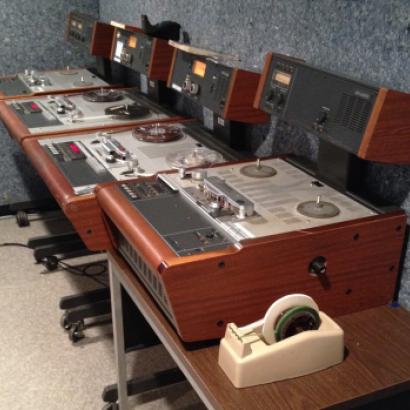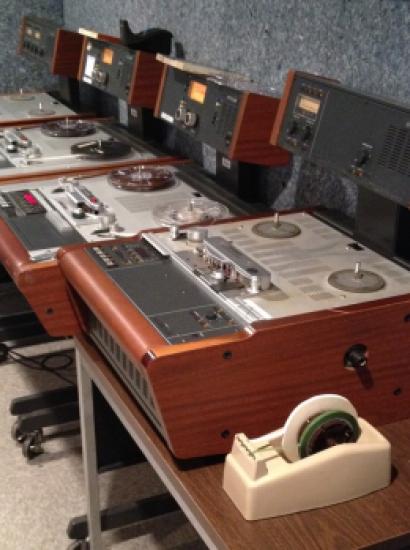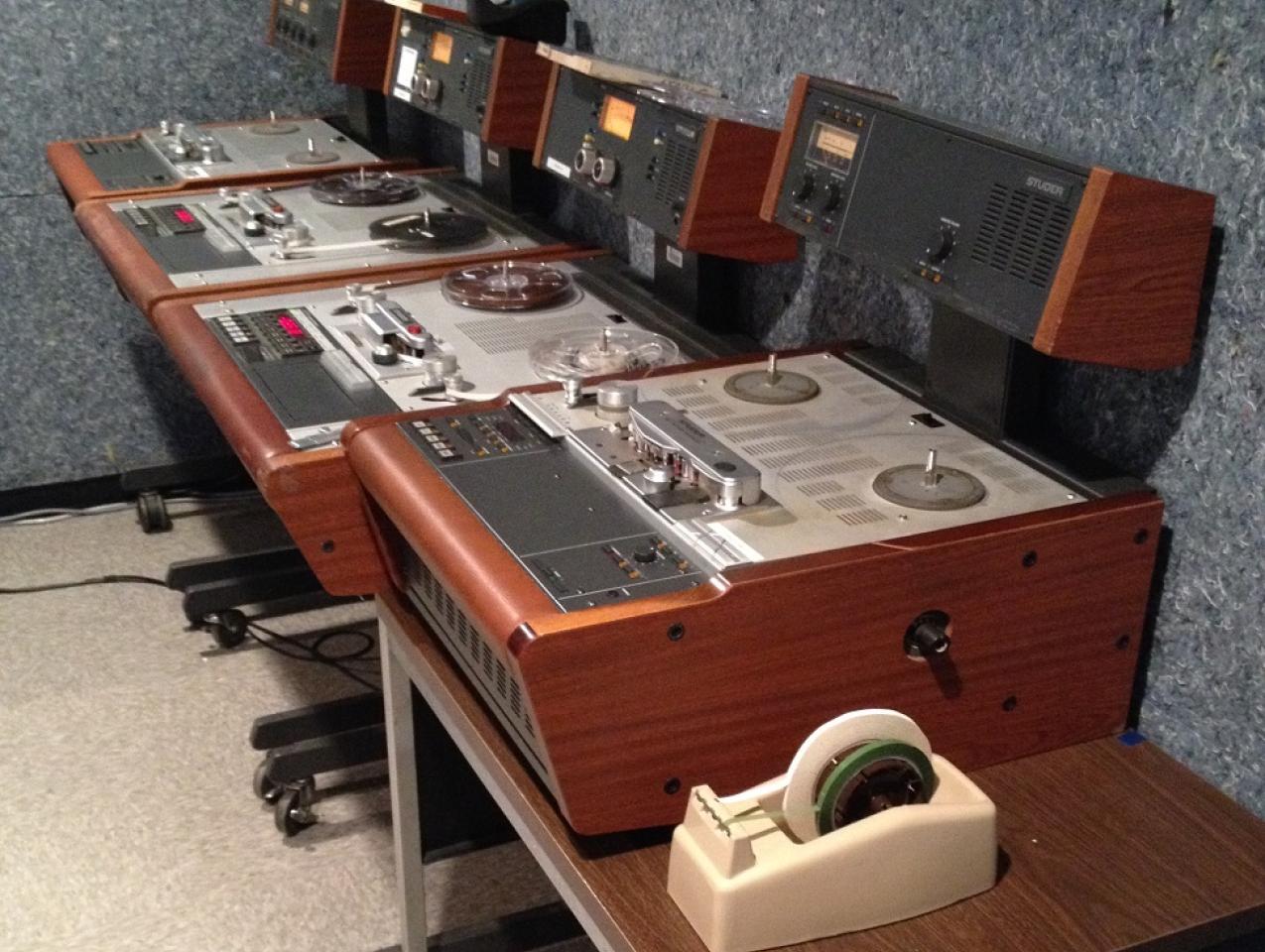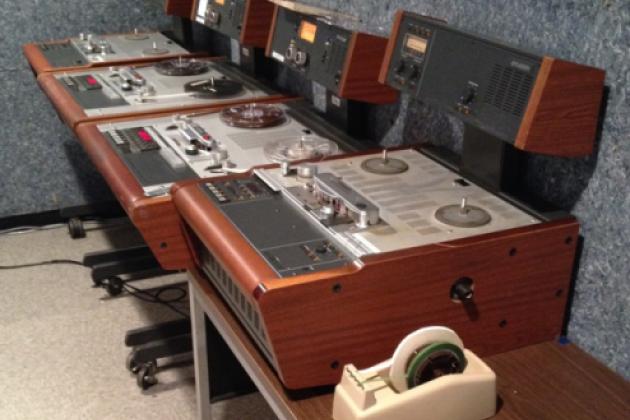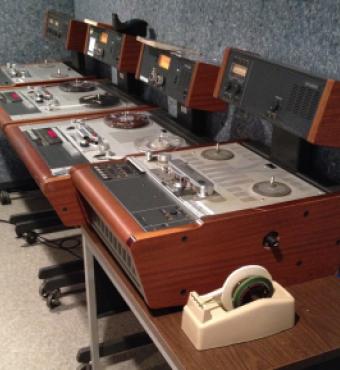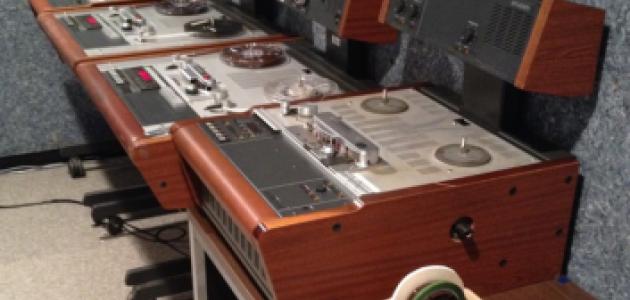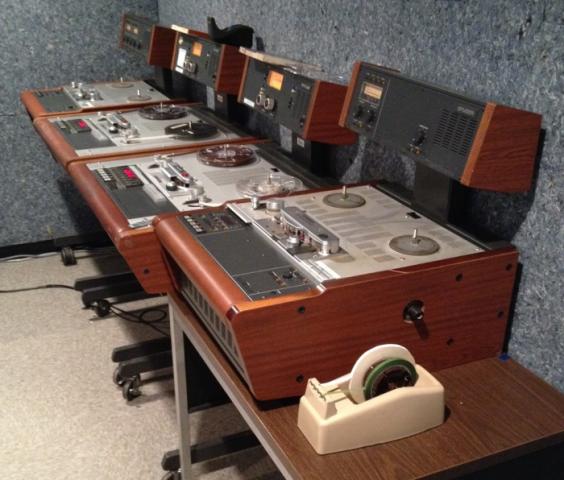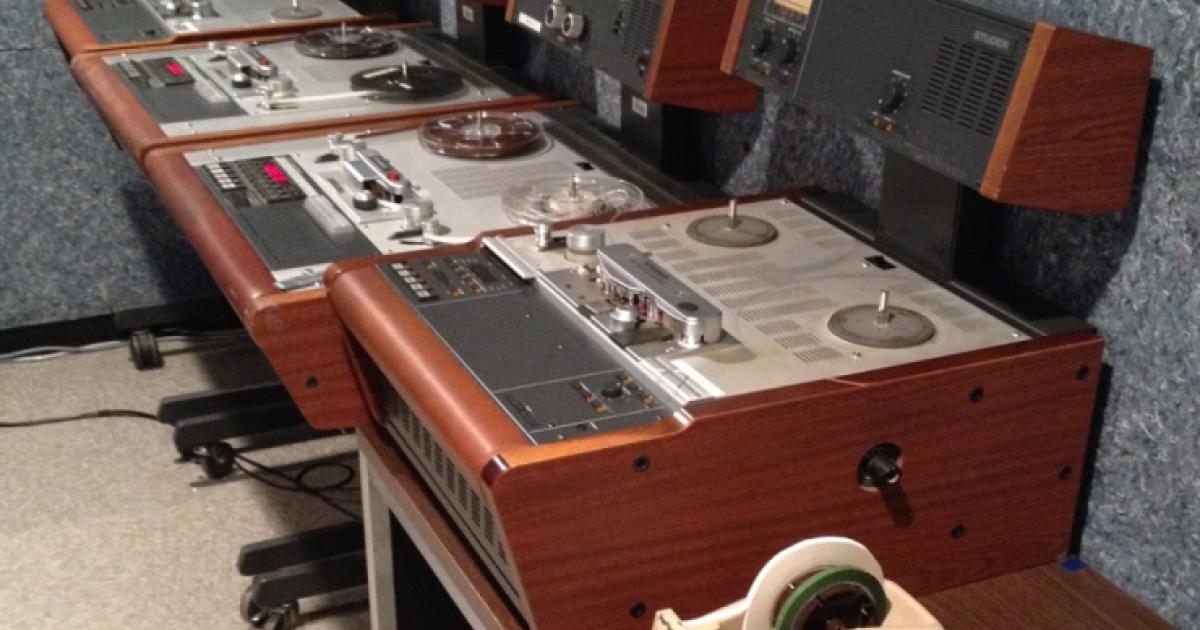When the Hoover Tower was under construction as part of the SESI project, we were able to give our audio infrastructure and systems a good, hard look. We decided we could rebuild them (we have the technology) or at least significantly modify them.
The Hoover Institution Archives has more than 100,000 unique audio recordings, nearly all on obsolete carriers in need of being moved to a new format, meaning that the machines on which to play back audio recordings are increasingly rare, of poor quality, and expensive to maintain. Although archivists usually talk about digitization as an access issue, we’re digitizing these discs, tapes, and other materials as an act of preservation and gaining easier access in the process. Marius Snyders, managing director of PrestoCentre, calls this the “Tiffany egg” phenomenon: migration costs will be astronomical a little over a decade from now, befitting only the most important assets. For this reason, we need to move our holdings quickly to a format we can support years/decades down the line. Increasing our number of usable playback machines is thus a top priority.
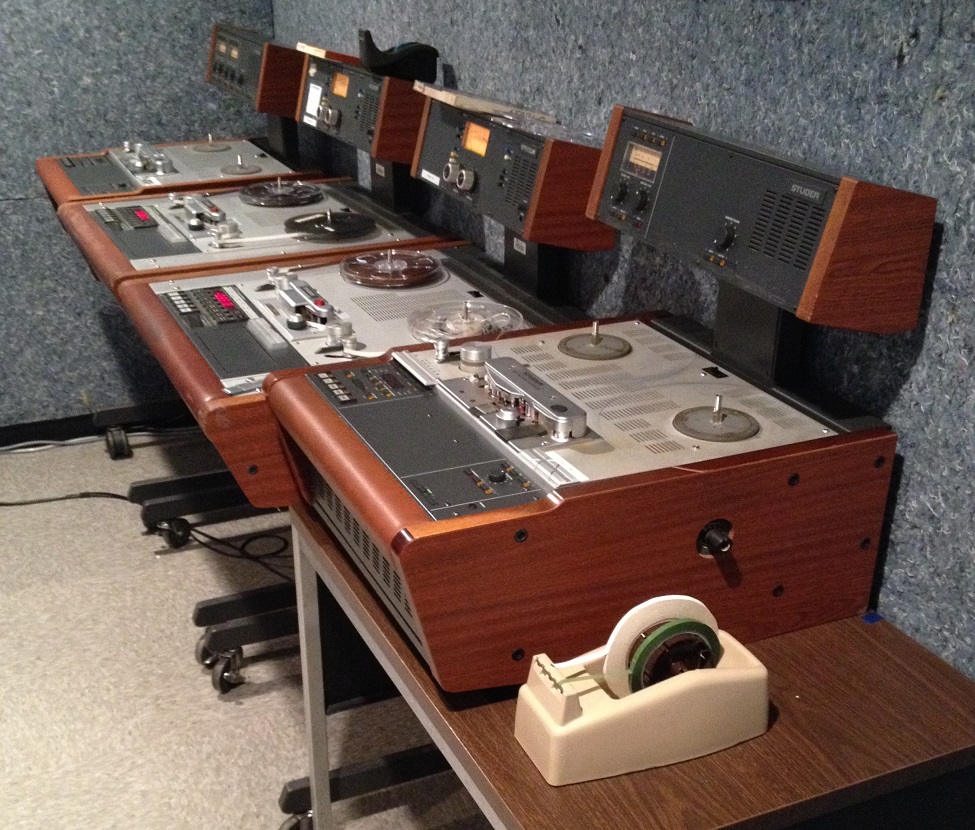
To that end, we have increased our stock of production-ready machines from two to six. Gifts from Radio Free Europe (RFE)/Radio Liberty (RL), these new-to-us Studer A812s are four of the machines that RFE/RL used to record programming in the 1990s. Restored by the Bay Area Studio Engineering in San Francisco, our tapes are benefiting from how gently the 812s guide them.
What are we digitizing with these machines?
A huge chunk of that 100,000 plus figure is the above-mentioned RFE/RL collection tapes. Whereas before we could work on only one RFE/RL tape at a time, we’re now able to digitize two concurrently, along with a third recording of an unrelated collection.
For RFE/RL, our priorities now are their Czechoslovak and Afghan services.
The Czechoslovak service is important because the tapes date back to the early 1950s; more important, they cover significant portions of the Prague Spring. Of the surviving RFE/RL-produced content, we have digitized everything from the beginning to summer 1971 to the time of writing. In addition to around-the-clock news reporting from August 1968, highlights include the 1950s satirical program From My Notebook on some especially-at-risk lacquer discs, specials on noted conductor and composer Rafael Kubelik, and the series Peroutka Memoirs and Prominent Exiles.
International events in Afghanistan since the 1980s explain why that service is being prioritized. At the time of writing, more than a quarter of the tapes have been digitized, as well as thousands of MiniDiscs from 2002–3. Having those recordings digitized dovetails nicely with the Said Hyder Akbar sound recordings we migrated years ago.
The third migration stream changes periodically. It’s a revolving door of 1970s Commonwealth Club of California luncheons, various oral histories, and a recent acquisition we can’t talk about publicly . . . yet.






